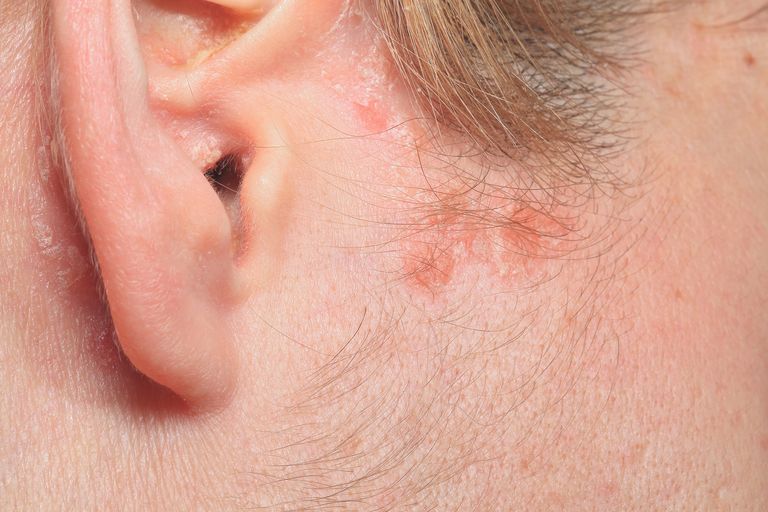7 Reasons Why You're Experiencing Hair Loss — and How You Can Fix It

When you think about going bald, you’re probably thinking about male pattern baldness, a permanent and basically irreversible form of hair loss. Male pattern baldness tends to start with a receding hairline and thinning on the crown, which usually becomes more pronounced over time.
But if you don’t have male pattern baldness, and you start to notice clumps of hair in your shower, it’s understandable why you might freak out. After all, who wants to lose their hair for good?
First of all, it’s important to note that seeing some strands in your drain or in your hairbrush is perfectly normal. “Most people shed 100 to 200 hairs per day,” says Anthony Rossi, M.D., a dermatologist at Memorial Sloan Kettering Cancer Center.
But even if you’re losing more than that, male-pattern baldness might not necessarily be at play. In fact, there could be some temporary causes of baldness you should know about. Here are seven (temporary) reasons why you might be losing your hair — and what you can do about it.

Getty Images
If something is wrong with your thyroid, hair loss is usually a pretty good indicator. Your thyroid helps to regulate hair quality and hair growth, says Robert Anolik, M.D., a cosmetic dermatologist in New York City. Hair loss can happen both with hyperthyroidism and hypothyroidism (low and high thyroid activity).
If thyroid hormone issues are a factor, you might notice that you’re losing hair all over your head, instead of in one specific area. You may also be losing body hair as well.
Fortunately, “most screening involves checking these routine blood levels with a simple test,” says Dr. Anolik. If your results are abnormal, an endocrinologist and a dermatologist can help coordinate treatment to get the levels back to normal, which usually involves taking medication. Once your levels are back to normal, you should notice your hair growth getting back on track.

Getty Images
If you notice your hair coming out easily when you comb your hair, it may be triggered by a stressful event. In this case, you’ll tend to see hair loss all over your head, not just in one specific area.
“That’s a sign that the hair follicles have gone into ‘hibernation’. It indicates that the hair follicles have entered the telogenic, or resting, phase,” says Rajani Katta, M.D., professor of dermatology at Baylor College of Medicine. “Hair follicles cycle through different phases of growth, and in the resting phase, those hairs are very easily dislodged. They come out by the roots.”
Severe physical and emotional stress can trigger this state of hair follicle hibernation. While it’s still not totally clear why stress or illness triggers this phase, some researchers believe it has to do with the stress hormones that are released during stressful situations.
“The hair loss is usually seen about 3 to 6 months after the triggering event, and it can then take another 3 to 6 months for the condition to reverse. But the good news is that, for most people, it does reverse on its own,” says Dr. Katta.

Gallery Stock
“When I see a circular patch of hair loss, the first condition I think of is a fungal infection,” says Katta.
The cause? Ringworm, aka athlete’s foot, is an infection you can get from direct contact with someone who has it, or by sharing things like towels or bedding with someone who has it. It’s pretty contagious. “They can cause redness and flaking, and sometimes even pus bumps, in a circular patch of hair loss,” she says.
If your ringworm test comes back positive, you’ll usually need an antifungal medication to cure your infection. When the infection is gone, your hair will start to grow back.

Getty Images
Extreme cases of psoriasis — an inflammatory condition marked by red, scaly plaques on your skin — or seborrheic dermatitis, can also cause temporary hair loss, says Dr. Anolik.
If that’s the case, you’ll tend to notice your scalp is patched with red and covered with greasy-looking, white or yellowish scales and dandruff, and your hair loss will be general.
The condition “can be controlled with dandruff shampoos initially, but if it’s not resolving quickly, I’d recommend seeing a board-certified dermatologist for prescription care,” he says.

Thinkstock
“Although there’s a lot of variability in how individuals react to medications, some possible triggering medications include steroids, antidepressants, and isotretinoin, a derivative of vitamin A that’s used to treat severe acne (like Accutane),” says Katta. Another common culprit is blood pressure medication —particularly, a beta blocker called propranolol — which can also lead to hair loss.
In these cases, discontinuing the medication, or switching to another kind, can restore hair growth, says Anolik. And while it sounds contradictory, you should also be wary of taking hair loss supplements.
“Many contain vitamin A, vitamin E, selenium, or even a combination of these. This can be a problem, depending on the doses, especially if you’re already getting more than enough of these nutrients in your diet,” says Dr. Katta. “That’s because excessive levels of these nutrients in your body can actually lead to more hair loss.”

Getty Images
Just switched to a vegan diet? If you’re not getting enough iron, you might start to notice general thinning on your scalp, says Dr. Anolik. That may be because an iron deficiency puts your body into survival mode, which means it uses nutrients and oxygen that are normally used to replenish your hair. That’s why your doctor may recommend a simple blood test to check your iron levels. If they’re low, he or she may recommend an iron supplement or iron-heavy diet. After your levels are restored, your hair will grow back, but it may take a few months.

Thinkstock
“Alopecia areata is a condition in which your immune system attacks your hair-producing cells,” says Joshua Zeichner, M.D., director of Cosmetic and Clinical Research at Mount Sinai Hospital’s Department of Dermatology. “This leads to individual, round patches of hair loss. In some cases it may be severe and affect the entire scalp, or even the eyebrows or beard.” You may also notice problems with your nails, such as pitting or white spots.
If you think you may have alopecia areata visit your dermatologist to discuss your options, which include cortisone injections, says Dr. Zeichner. Other autoimmune diseases such as lupus are also associated with thinning hair.
Overall, if you’re worried about your hair loss—or you’re concerned that it may be more permanent — make an appointment with a dermatologist. “These physicians are the ones trained in hair and hair diseases. They understand the various entities that can cause hair loss and how to diagnosis and treat them,” says Rossi.
Source: Read Full Article


